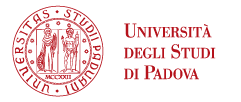PRIN 2022 PNRR / Barzon

Titolo: Determinants of neuropathogenicity of emerging strains of Toscana virus and West Nile virus circulating in Italy
Codice Progetto: P2022WYNAH
Responsabile scientifico per il DMM: Prof.ssa Luisa Barzon
Coordinatore: Università degli Studi di SIENA – Prof.ssa Maria Grazia CUSI
Partner-Unità di ricerca: Università degli Studi di PADOVA
Bando: PRIN 2022 PRIN - Decreto Direttoriale n. 1409 del 14-09-2022
Durata: 30/11/2023 - 29/11/2025 (24 mesi)
Finanziamento progetto: € 238.108,00 – CUP B53D23024530001
Abstract del progetto
The recent emergence of global infectious disease threats, like Zika virus congenital disease, COVID19 pandemic, monkeypox virus outbreaks outside Africa, and large Ebola virus outbreaks in Africa, emphasizes that no pathogen should be underestimated. In the recent years, Italy has witnessed incursions of viruses from tropical areas, such as dengue virus that caused a local outbreak in Veneto Region in 2020 [Barzon 2021], and the upsurge of outbreaks of endemic vector-borne pathogens, like West Nile virus (WNV) and Toscana virus (TOSV), which are expanding their geographical range [Barzon 2018; Gori Savellini 2020]. The emergence of new genetic variants of vector-borne viruses increases the risk of large outbreaks, mainly because of immune escape in the amplifying host and hence greater epidemic potential, but also because of increased virulence. This has conceivably occurred recently in Italy with WNV and TOSV. In fact, large WNV outbreaks have occurred following the introduction of new strains in 2008-2009 (WNV lineage 1, WNV-1), 2011-2012 (WNV-1), 2013 (WNV-2), 2018 (WNV-2). During the 2022 transmission season, Italy has suffered again a significant rise in West Nile Neuroinvasive Disease (WNND) [Riccardo 2022], associated with the introduction of a new WNV-1 strain, first detected in Padova province in 2021 (WNV-1 IT-2021) [Barzon 2022a]. This strain showed a more rapid expansion in the wild bird reservoir than the co-circulating endemic WNV-2 and was significantly associated with and increased risk of WNND in humans [Barzon 2022b]. In 2019, TOSV, another vector-borne virus which may cause causing serious neuroinvasive disease, although self-resolving in most cases, was detected in the seminal fluid of an Italian 25-year-old man returning from Elba Island [Matusali 2022]. The presence of infectious virus in human semen adds TOSV to the long list of viruses detected in this genital fluid and indicates a potential for sexual transmission.
Given these premises, this research proposal aims to characterize the molecular mechanisms underlying the increased neuropathogenicity of the WNV-1 and TOSV strains isolated in Italy in 2021-2022 and in 2019. This project will allow to (i) track the early evolution and adaptation of WNV-1 IT-2021 to a new ecosystem, (ii) identify mutations in WNV-1 and TOSV genomes potentially associated with increased epidemic potential and virulence, (iii) compare the phenotype of WNV and TOSV strains (characterized by different neurovirulence) in neural cells and brain organoids; (iv) experimentally characterize relevant mutations of viral proteins; (v) pinpoint peripheral biomarkers of neuroinflammation and neuronal damage in cohorts of patients; (vi) determine the ability of the new viral strains to evade host immunity by cross-neutralization experiments.





